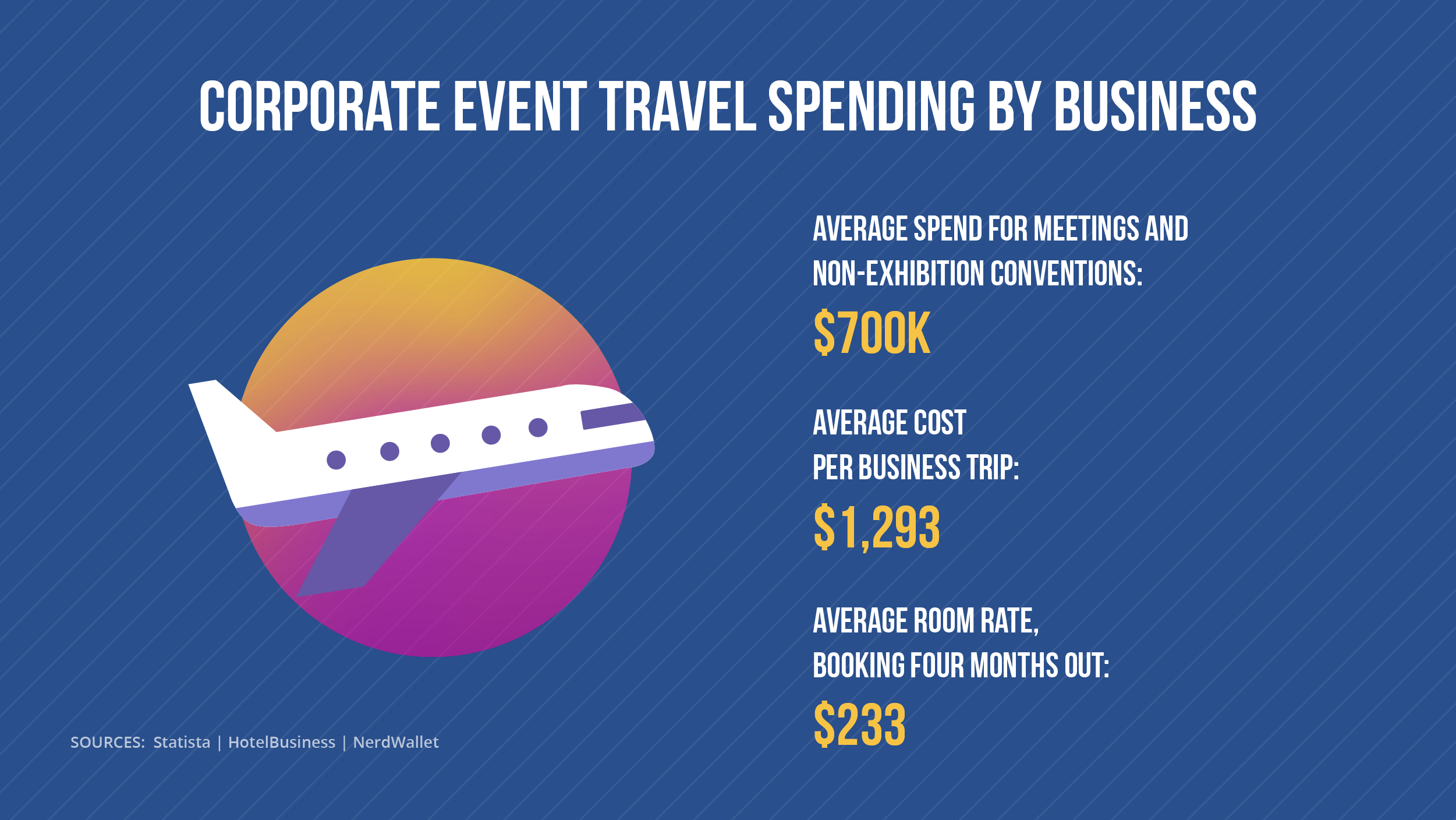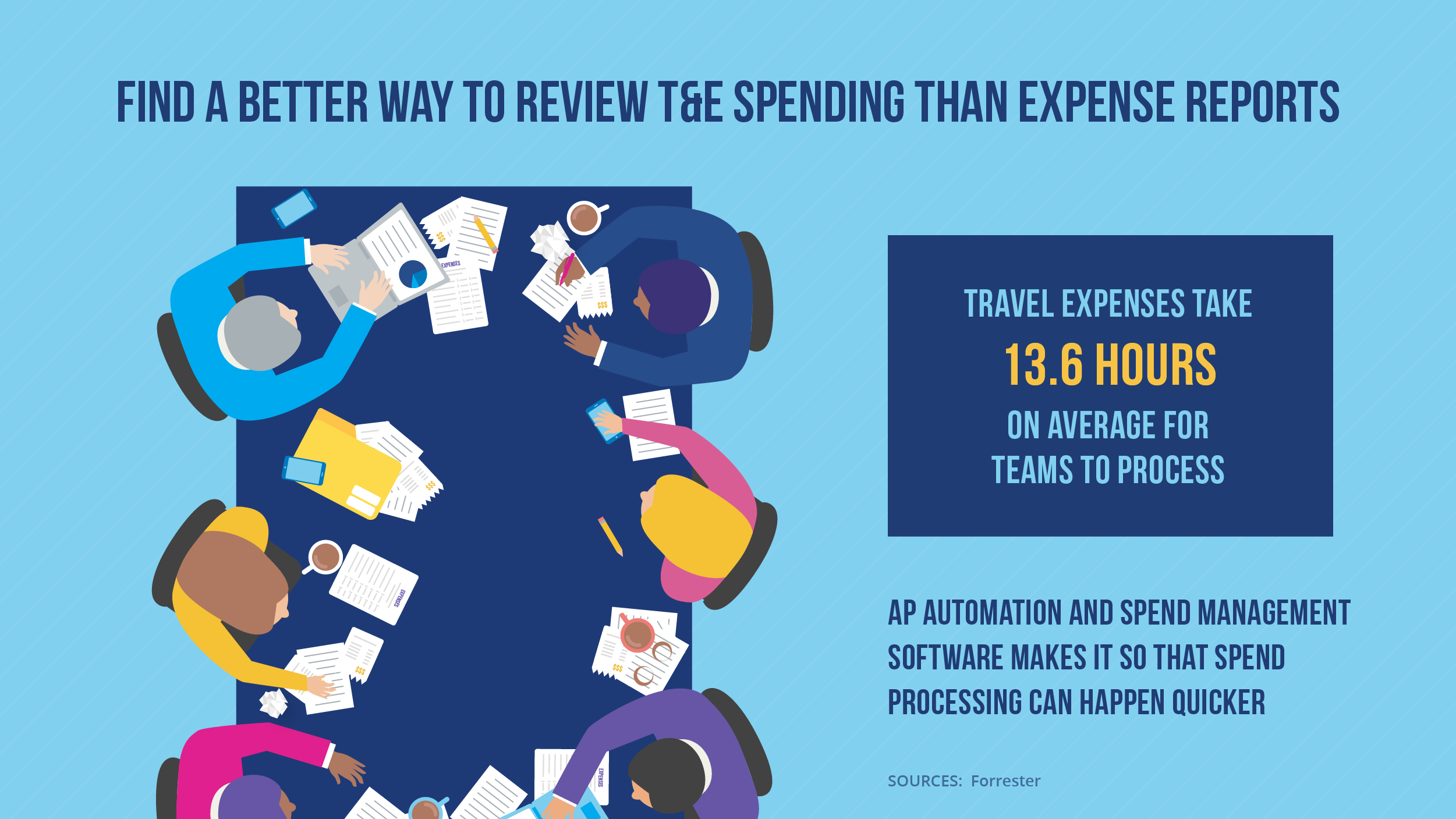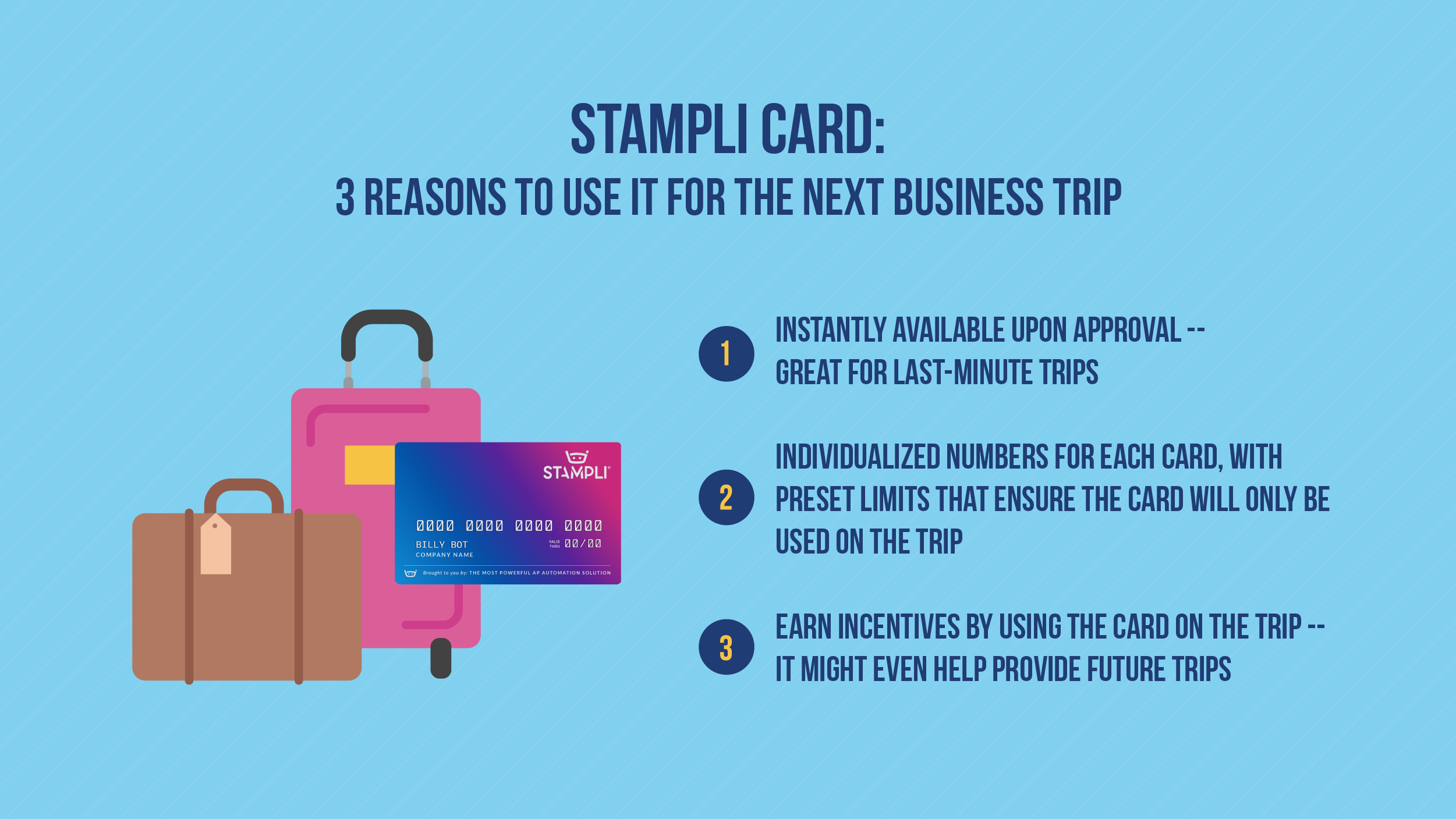How to Control Hotel Expenses: 4 Easy Tips for Businesses

Keeping hotel expenses under control sometimes gets forgotten amidst various accounts payable-related duties.
A 2021 survey report by Stampli and Treasury Webinars, “Drivers of AP Success: Metrics, Collaboration, Influence” found 33% of respondents had travel and entertainment (T&E) expense management included in their accounts payable (AP) function job responsibilities, the 10th most-common duty. More often, AP staffing personnel were managing payments, matching purchase orders to invoices, and many other initiatives.
This doesn’t make controlling hotel expenses any less important for businesses. Those that don’t exercise good sway over their T&E expenses can spend more than they need to and be susceptible to fraud. They can also lose enthusiasm for travel which can be a vital part of business and offer a great return on investment.
Today, we’re going to look at a few strategies so businesses don’t have to fear travel costs. Join us as we explore how to control hotel expenses, including via Stampli Card.
Why Hotel Expenses are Unavoidable In Business
The hotel industry and occupancy rates took a massive hit in the early months of the COVID-19 pandemic, with Deloitte noting in April 2022 that “corporate travel remains below 50% of prepandemic spend and faces a more complex prognosis than leisure travel.”
Still, things could be picking back up for the hospitality industry. Deloitte added that for 2022’s remainder: “corporate travel should grow significantly from its now small base.” PYMNTS.com noted in April 2022 that a Mastercard report the month before showed airline spending had risen 44.8% in a year “along with significant growth in restaurants and lodging expenditures.”
Bottom line, the hotel business is usually pretty reliable for hoteliers, and the times hotel revenue takes a hit, it comes back quickly enough. Accordingly, hotel expenses can also be a drain on a business’s revenue management if it isn’t careful. Here are three reasons why:
The Average Business Attends A Lot of Corporate Events
Statista notes that the average budget related to “meetings and conventions without exhibition in the U.S.” from 2011-19 was $700,000. Meanwhile, the average cost is around $1,293 per business trip.

Obviously, the pandemic has skewed these averages, with 87% of business event professionals cancelling events early on. Even now, some possible attendees are still cautious about doing business with hoteliers. Still, whenever business travel returns to pre-pandemic levels, there will be no shortage of events for companies to attend. These events provide a number of benefits:
- Learning industry trends,
- Networking with potential vendors and service providers
- Making social media connections even during downtime
- Giving personnel something to look forward to aside from the day-to-day of their jobs
When these events happen, be they trade shows, professional development conferences, or industry showcases, they’re often held at or near major hotels that can cost hundreds of dollars a night per room or require direct bookings months in advance. CNBC noted last September that from 2019-2021, the average rate for a room booked four months out was $233 according to NerdWallet.
It Can Be Worth Traveling to Meet a Client
So much of business has happened via Zoom or other web conferencing applications the past couple of years. And even before that, many businesses lived by phone, social media, and web contact with current and prospective clients.
It can definitely be a lot more cost-effective to keep employees working out of an office or remote desk; but there will also be times where business can’t happen any way other than in-person. As Indeed.com noted in 2021: “Even with the rise of technology, many businesses continue to opt for face-to-face meetings because they can facilitate more effective communication, help build strong relationships, and increase engagement.”
Traveling to meet with clients can almost be grouped in with marketing costs, as it’s a good way to retain business and can even bring in new clients.
On a related note, businesses can also incur travel expenses if they have a consultant or other employee working with a client for an extended period. In times where it might not make sense to permanently relocate an employee (and the employee is already racking up labor costs for a business with their willingness to go wherever, for as long as is needed) hotel expenses can quickly build.
Supplier Visits Help Ensure Good Working Relationships
Many companies do business with third-party suppliers located far away, some even manufacturing goods or providing services internationally. And while a lot of what needs to happen on either end of the sourcing relationship can happen remotely, there will be times where it’s worth visiting a supplier, no matter how far away.
When businesses go to visit a supplier, they can get an idea of the supplier’s capabilities. They can also revisit contract terms, conversations that don’t always happen as easily over phone or Zoom.
Four Strategies for Getting Hotel Expenses Under Control
It’s easy for businesses to lose control of hotel expenses. Corporate events not held at convention centers or sports arenas might be hosted at pricey hotels. Clients and suppliers aren’t always near affordable hotels.
Beyond this, businesses don’t always have strong policies in place for booking and paying for T&E expenses. In addition, they may not use technology like AP automation or virtual payments platforms that can streamline bookkeeping.
Businesses should try to have the best possible controls for hotel spending. Here are four to consider:
1. Consider Staying Off-Site From an Event
Sleeping in the heart of the action at a convention might mean ponying up if the event is held at a hotel in a major city. There’s no shame in cutting costs by staying somewhere nearby that is cheaper. It might not have a high-end reputation, but it can be a perfectly acceptable place to sleep after a long but rewarding day at an event.
Staying elsewhere can allow businesses to wait to book, since they’re not tied to a particular hotel. From 2019 to 2021, NerdWallet found that rooms booked 15 days out had an average cost of $203 per night, a 12.9% savings over booking four months in advance (average cost $233 per night).
2. Have Hotel Approval and Booking Policies
Planning for business travel sometimes happens weeks, if not months in advance. Other times, it’s a quick process, with a company representative learning one day they’re needed somewhere and on a plane the next day.
In the latter scenario, it can be tempting to let personnel do whatever they need to get a hotel room as quickly as possible. But allowing free-for-alls with hotel bookings can lead to poor outcomes, such as travel accommodations going significantly over budget.
Having policies for hotel bookings and approvals helps keep businesses from being taken advantage of when the need for last-minute travel arises.
3. Regularly Audit Travel and Entertainment Expenses
It’s imperative for businesses to not just trust everything’s going fine with T&E spending or to just plan on squaring things up via paper expense reports. For one thing, expense reports are tedious to manually process, with Business Insider in 2021 making note of findings from Forrester that 13.6 hours are needed “for everyone involved in the chain to process all travel expenses for each trip.”

Instead, businesses can look to technology, such as AP automation or virtual or ghost payment cards, that keeps audit-ready records of travel and entertainment spending. These records can offer detailed breakdowns, with nothing left in the dark for businesses to find out months after the fact. Instead, this data will be real-time.
4. Consider How Your Company Pays for T&E
A 2021 survey report by Stampli and Treasury Webinars, “How & Why Companies Choose Payment Types” found 90% of payments are made by either check, credit card, or the automated clearing house (ACH.)
While each of these payment methods might be ubiquitous, none are ideal when paying for hotel rooms. The ACH and checks each might take too long to arrive. Hotel bookings likely happen far more often online via credit card, but even that’s not the greatest. Credit card numbers may be stolen, or misappropriated by rogue employees.
If businesses are serious about reining in hotel expenses, they need serious payment controls. Next, we’re going to explore why using a Stampli Card is the way to go.
How Stampli Card Helps to Control Hotel Expenses

When a business pays for a hotel room with Stampli Card, they aren’t leaving anything to chance. Instead, they are using a secure, emerging, and innovative payment solution that will help them to travel stress-free.
Here are a few reasons to use Stampli Card for a business’s next hotel booking:
Great Cost Controls
Stampli Card is part of a virtual payment platform that businesses can use for any number of different transactions, from T&E to goods and services from vendors and suppliers.
Whenever a business has something they want to pay for with Stampli Card, they can create an individualized card for the transaction. The Stampli Card can be single or multi-use, and cyclical. When it comes to single use, the card will have one-time numbers that aren’t reusable (though cards can be created for reuse), with businesses able to create an unlimited number of cards. Cards may be issued for specific employees and departments, with hard limits on how much can be spent. Hence, if a hotel room costs Bob Smith of XY Corporation $216 with taxes and fees, a Stampli Card can be created that allows Bob to $216 and not a penny more.
It’s a superb cost control method for businesses, helping them ensure there will be cost savings on their stayovers rather than inefficiencies.
Available When Employees Need It
Stampli Card’s ironclad spending controls don’t hinder its useability or availability. Cards are instantly available as soon as they’re approved and can also be issued remotely to employees.
There will be no need for employees to tensely sit in the office of a company’s CPA, CFO, or human resources staffer waiting for petty cash to be issued for a business trip or trying to find out if they can be added onto a company’s credit card (which might not always be the easiest due to credit limits). Finally, employees shouldn’t have to use their own money and hope for reimbursement.
Stampli Card allows personnel to have the spending capability that they need as quickly as they require it on their business trips, knowing they’ll enjoy a smooth check-in at the front desk with hotel management. This can allow a company’s staff members to focus on the true purpose of the trip – the conference, the client, the supplier – rather than having to worry about where they’re staying and how they’re paying for it.
Audit-Ready Spending Records
One more thing before we close here: Few things can spoil a good business trip like having shoddy payment records at the end. Paper receipts can go missing. Even checks and credit cards don’t always provide the most detailed records.
This isn’t the case with Stampli Card, which will give businesses a wide range of spend management information in audit-ready form. Want to know which employee booked a room or the department that incurred the cost? It can all be there, with businesses able to customize.
It’s just one more thing for making sure that when it comes to staying in hotels on corporate trips, solutions like Stampli Card help businesses have a first-class guest experience.
For hotel expenses, we don’t believe in extended stay, we believe in extended pay controls. Try Stampli Card today.